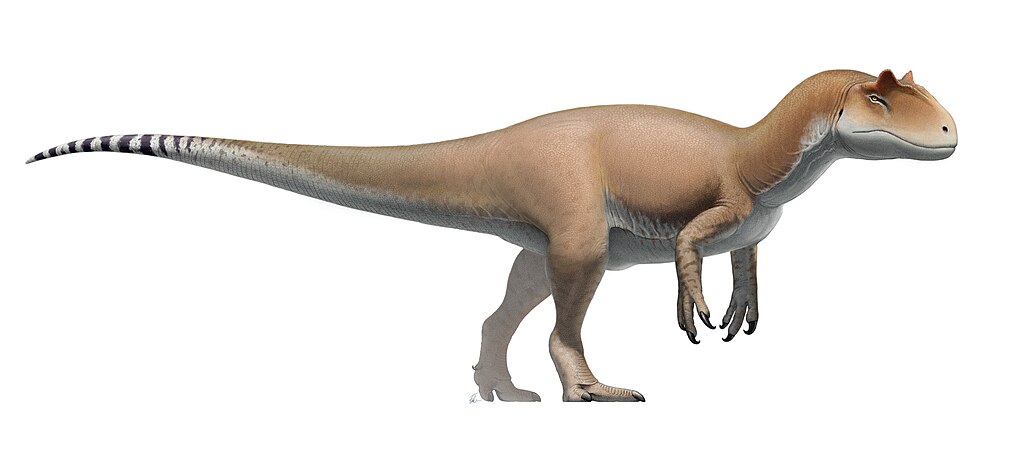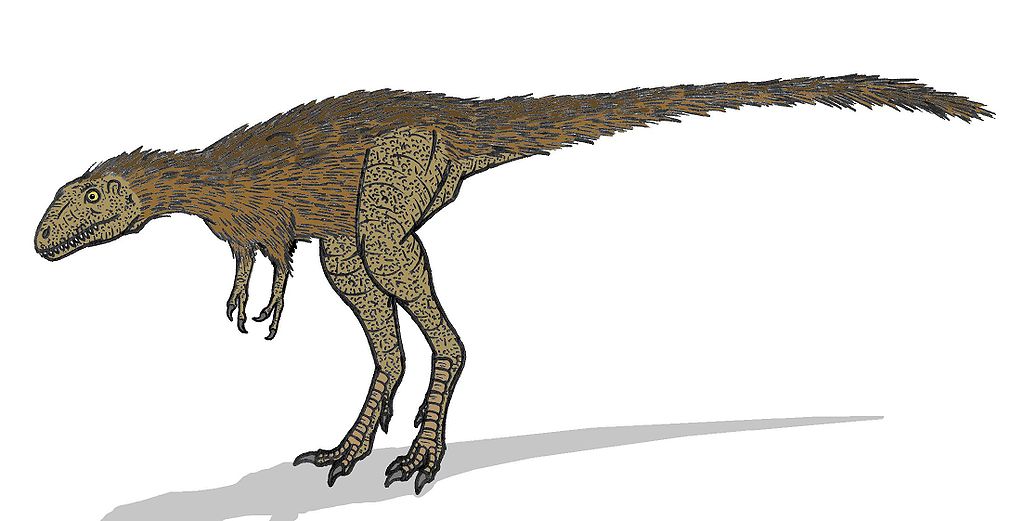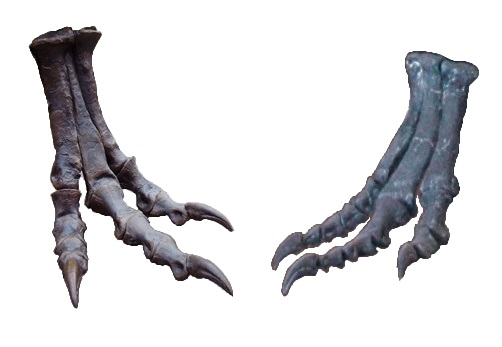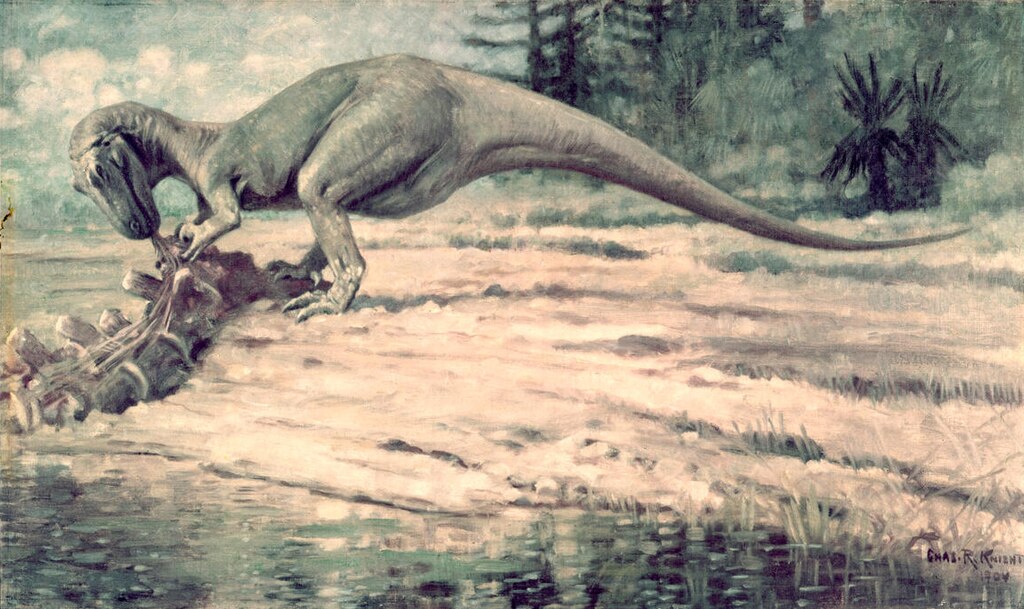When we imagine prehistoric predators, two names often dominate our thoughts: Allosaurus and Tyrannosaurus rex. These iconic dinosaurs represent the apex predators of their respective time periods, yet they differed significantly in anatomy, behavior, and evolutionary history. While both were formidable carnivores that have captured public imagination through museums and media, understanding their distinctions provides fascinating insights into dinosaur evolution and the changing ecosystems of prehistoric Earth. This article explores the key differences between these magnificent theropod dinosaurs, separating fact from fiction and revealing what made each species uniquely adapted to their environments.
Temporal Separation: Living in Different Eras

Perhaps the most fundamental difference between Allosaurus and Tyrannosaurus rex is that they never could have encountered each other in nature, being separated by approximately 80-85 million years of evolutionary history. Allosaurus roamed western North America and parts of Europe during the Late Jurassic period, approximately 155 to 145 million years ago. This places Allosaurus in an entirely different geological era than T. rex, which lived during the Late Cretaceous period, specifically from about 68 to 66 million years ago, just before the mass extinction event that wiped out non-avian dinosaurs. This vast temporal gap means these predators evolved in response to different environmental pressures and prey species, resulting in distinct adaptations and hunting strategies.
Size and Physical Proportions

The size disparity between these two theropods is substantial and represents one of their most obvious differences. Tyrannosaurus rex was significantly larger, with adults typically measuring 40-42 feet in length and standing up to 12 feet tall at the hip. Adult T. rex specimens weighed between 8-10 tons, with some exceptional individuals possibly reaching 14 tons. Allosaurus, while still impressive by modern standards, was notably smaller, measuring approximately 28-33 feet in length and weighing around 1.5-2 tons. The physical proportions also differed markedly, with T. rex having a more robust, barrel-shaped body designed to support its massive head and powerful jaws, while Allosaurus displayed a more gracile build with longer, more slender proportions relative to its size.
Skull Structure and Bite Force

The skull morphology between these two predators reflects their different hunting strategies and evolutionary paths. Tyrannosaurus possessed an enormous skull measuring up to 5 feet in length with deep, wide jaws housing banana-sized serrated teeth. Its skull featured numerous air pockets (pneumatic openings) that reduced weight while maintaining structural integrity. T. rex had an estimated bite force between 35,000 to 57,000 newtons, among the strongest of any terrestrial animal that ever lived. Allosaurus, conversely, had a comparatively lighter, narrower skull with blade-like teeth better suited for slicing than crushing. Its bite force was significantly weaker, estimated around 3,500 newtons, suggesting a different predatory approach that likely involved slashing at prey rather than delivering the bone-crushing bites characteristic of T. rex.
Forelimbs and Manual Dexterity

One of the most striking differences between these dinosaurs involves their forelimbs. Tyrannosaurus rex is famous for its disproportionately tiny arms, which measured only about 3 feet long on a 40-foot animal—shorter than a human arm despite the dinosaur’s massive size. These arms featured just two functional digits (fingers) and have sparked considerable scientific debate regarding their function, from theories about helping the animal rise from a prone position to playing a role in mating rituals. Allosaurus, by contrast, possessed much longer, more functional three-fingered arms equipped with large, curved claws that likely played an important role in capturing and subduing prey. The forelimb anatomy of Allosaurus suggests these appendages were crucial hunting tools, whereas T. rex appears to have relied almost exclusively on its massive jaws for killing.
Locomotion and Speed Capabilities

The locomotive abilities of these two predators reflected their different hunting strategies and ecological niches. Allosaurus, with its more gracile build and longer legs relative to body size, was likely capable of greater speeds, with most scientific estimates suggesting maximum running speeds of 30-35 mph. Its center of gravity was balanced, allowing for greater agility and maneuverability when pursuing prey. Tyrannosaurus, despite popular culture often depicting it as an extremely fast runner, was probably significantly slower due to its massive size and weight. Recent biomechanical studies suggest T. rex likely moved at walking speeds of 10-15 mph, with brief accelerations possibly reaching 20 mph. The massive musculature of T. rex’s legs appears optimized for strength and endurance rather than speed, suggesting a predator that relied more on power than agility.
Hunting Strategies and Prey Preferences

The anatomical differences between Allosaurus and T. rex translated directly into different hunting strategies. Allosaurus likely approached hunting as an ambush predator that used its speed and agility to pursue prey, using its arms to grapple victims while employing its upper jaw like a hatchet to inflict deep, bleeding wounds. Evidence suggests Allosaurus frequently targeted large sauropods and stegosaurs, using pack hunting tactics to bring down animals many times its size. Tyrannosaurus, conversely, appears to have been an opportunistic predator that could function both as an active hunter and scavenger. Its incredible bite force allowed it to crush bone and tear through tough tissues, while its advanced sense of smell helped locate carrion across great distances. T. rex primarily preyed upon large ornithischians like Triceratops and Edmontosaurus, using its massive jaws to deliver devastating, often fatal initial bites.
Sensory Capabilities and Intelligence

The sensory systems of these predators show intriguing differences that reflect their evolutionary adaptation. Tyrannosaurus rex possessed one of the largest brain-to-body ratios among non-avian dinosaurs, with a brain volume approximately 400 cubic centimeters, suggesting relatively advanced cognitive abilities. It had forward-facing eyes providing substantial binocular vision, with optical orbits among the largest of any terrestrial animal. Additionally, T. rex had an extremely developed olfactory region, indicating an exceptional sense of smell that likely could detect carrion from miles away. Allosaurus, while also possessing keen senses, had a comparatively smaller brain relative to body size. It featured large eyes with good vision but had less pronounced olfactory capabilities. The brain structure of Allosaurus suggests it relied more heavily on vision for hunting, while T. rex appears to have integrated multiple sensory inputs, particularly smell, when locating food.
Evolutionary Relationships and Classification

From a taxonomic perspective, Allosaurus and Tyrannosaurus belonged to different families within the theropod suborder. Allosaurus was the definitive member of the family Allosauridae and part of the superfamily Allosauroidea, which includes other large Jurassic predators like Saurophaganax. This group represents an earlier branch of large theropod evolution. Tyrannosaurus rex, meanwhile, belonged to the family Tyrannosauridae within the superfamily Tyrannosauroidea, representing a much later, more specialized evolutionary branch of theropod dinosaurs. Despite superficial similarities as large bipedal predators, they are not particularly closely related within the theropod evolutionary tree, with tyrannosaurs being more closely related to modern birds than to allosaurids. This distant relationship underscores how similar predatory adaptations evolved independently in different lineages separated by millions of years.
Contemporaneous Ecosystems and Competitors

The ecological contexts in which these dinosaurs lived differed significantly, influencing their evolution and behavior. Allosaurus inhabited Late Jurassic ecosystems characterized by massive sauropods like Diplodocus and Brachiosaurus, armored stegosaurs, and various smaller prey species. It shared its environment with other large predators including Ceratosaurus and Torvosaurus, suggesting competition that may have driven specialization in hunting strategies. Tyrannosaurus rex, existing in the Late Cretaceous, encountered an entirely different faunal assemblage dominated by duck-billed hadrosaurs, horned ceratopsians like Triceratops, and armored ankylosaurs. Unlike Allosaurus, adult T. rex had few if any meaningful competitors in its ecosystem, having evolved into the dominant apex predator role. This ecological dominance may explain some of T. rex’s specializations, including its enormous size and bone-crushing bite force.
Growth Patterns and Life History

The growth trajectory and life history of these two theropods exhibit fascinating differences that reflect their evolutionary paths. Tyrannosaurus rex underwent dramatic changes throughout its development, with juveniles being relatively lean, long-legged runners that later developed into massive, powerful adults. Studies of T. rex bone histology indicate extremely rapid growth during the teenage years, when individuals could gain up to 1,500 pounds annually, before slowing as they approached full size around 20 years of age. Allosaurus appears to have had a more consistent growth pattern throughout its life, developing at a steady but less dramatic rate. Research suggests Allosaurus reached maturity earlier than T. rex, typically around 10-15 years of age, and had a potentially shorter overall lifespan of approximately 25 years compared to T. rex’s estimated 30+ years. These differences in growth patterns suggest fundamental distinctions in metabolic rate and developmental strategy between the two predators.
Fossil Record and Scientific Understanding

The quality and quantity of fossil evidence available for each species has significantly influenced our understanding of these dinosaurs. Allosaurus represents one of the most well-documented large theropods, with over 60 specimens recovered, including the remarkably complete specimen nicknamed “Big Al.” This wealth of material, particularly from the Morrison Formation in western North America, has allowed scientists to develop detailed understandings of Allosaurus anatomy, growth, and potential behavior. Tyrannosaurus rex, while culturally more famous, has a more limited fossil record, with approximately 50 partial specimens discovered to date, including famous individuals like “Sue” and “Stan.” However, many T. rex specimens have exceptional preservation quality, including soft tissue impressions, which has enabled advanced research into its biology. The different preservation environments and taphonomic conditions of the Jurassic and Cretaceous periods have resulted in varying qualities of evidence, influencing how completely we understand each species.
Cultural Impact and Popular Perception

The cultural footprint of these two prehistoric predators differs dramatically, reflecting both scientific understanding and public imagination. Tyrannosaurus rex has achieved unparalleled status as the archetypal dinosaur in popular culture, featuring prominently in everything from scientific literature to children’s toys, movies, and commercial merchandise. Its very name—”tyrant lizard king”—has helped cement its place as the ultimate prehistoric predator in public consciousness. The 1993 film “Jurassic Park” particularly catapulted T. rex to global recognition. Allosaurus, despite being well-known among paleontology enthusiasts, has maintained a comparatively lower profile in popular media, often serving as the “default” large theropod in Jurassic-era depictions but lacking the instant name recognition of its Cretaceous counterpart. This disparity in cultural impact has sometimes led to misunderstandings about their relative importance in dinosaur evolution, with T. rex occasionally overshadowing the significant role Allosaurus played as the dominant predator of its time.
Extinction Events and Legacy

The ultimate fates of these dinosaur lineages provide a final point of contrast in their evolutionary stories. Allosaurus and its close relatives disappeared during the end-Jurassic extinction event, a relatively minor extinction compared to others in Earth’s history but one that reshaped terrestrial ecosystems. This extinction cleared ecological space for new predator lineages to evolve during the Cretaceous period. Tyrannosaurus rex, meanwhile, persisted until the very end of the Mesozoic Era, vanishing during the catastrophic Cretaceous-Paleogene extinction event approximately 66 million years ago, when an asteroid impact wiped out approximately 75% of all species on Earth, including all non-avian dinosaurs. The timing of their respective extinctions meant that allosaurids had already been extinct for about 80 million years when the last T. rex perished, underscoring their separation in evolutionary history. Despite their extinction, both dinosaurs left evolutionary legacies—studies suggest that modern birds trace their ancestry through the theropod lineage, making them distant relatives of both these magnificent prehistoric predators.
Conclusion: Giants That Never Met

The differences between Allosaurus and Tyrannosaurus rex highlight the dynamic nature of evolution over vast timescales. Separated by 80 million years—more time than separates humans from the last non-avian dinosaurs—these predators evolved distinct adaptations in response to different evolutionary pressures and ecosystems. Allosaurus, with its blade-like teeth, functional arms, and more gracile build, represented the pinnacle of Jurassic predatory adaptation. Tyrannosaurus, with its massive size, incredible bite force, and specialized sensory capabilities, evolved as the ultimate expression of Cretaceous predatory design. By understanding their differences, we gain insight not only into these specific dinosaurs but into the broader patterns of evolution and adaptation across deep time. Though they never encountered each other in life, together they tell the story of the ever-changing nature of Earth’s ecosystems and the remarkable diversity of adaptations that can arise in response to the eternal challenges of survival.



